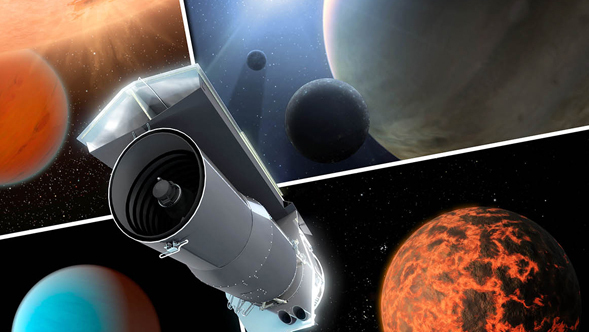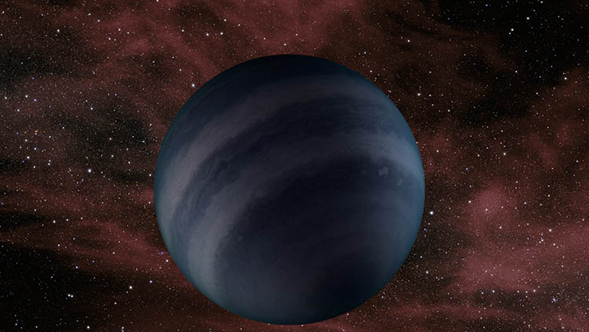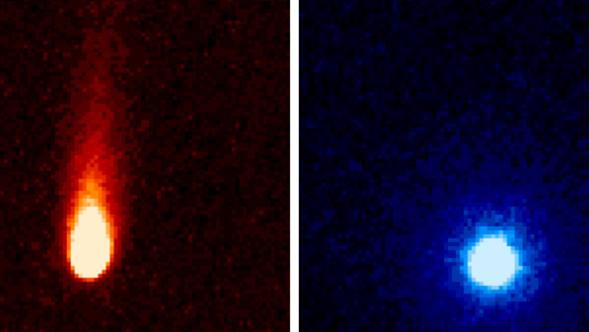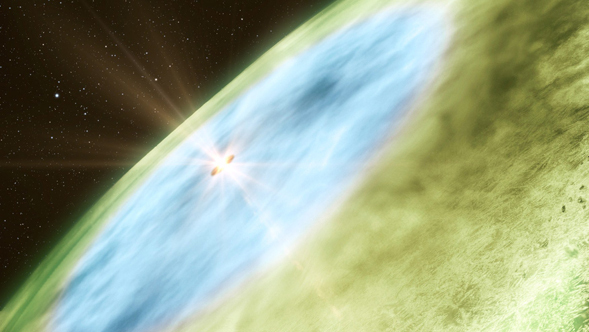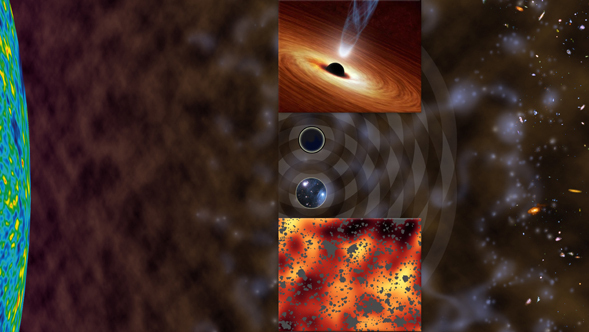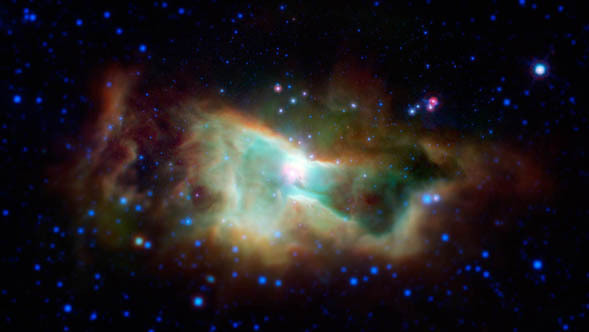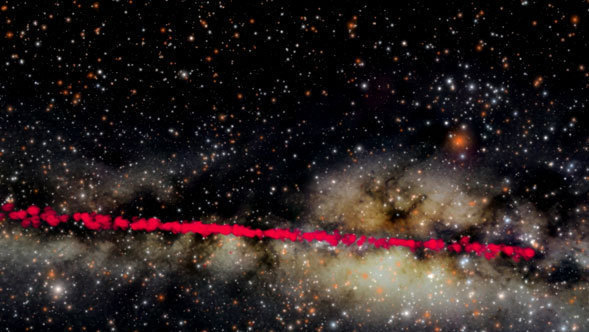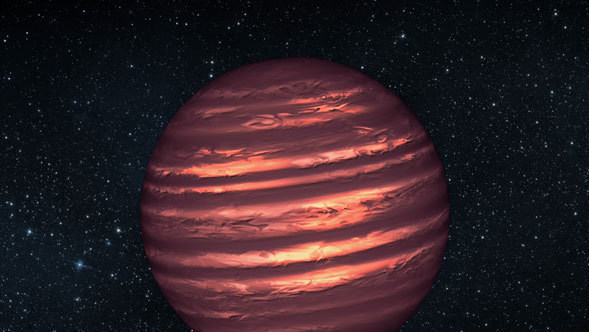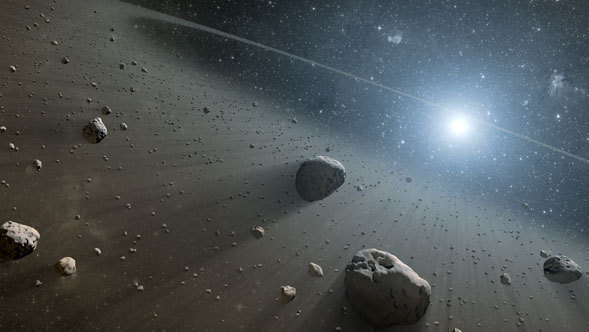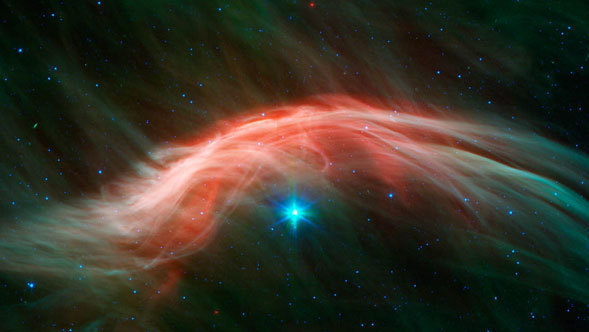Displaying news 181 - 210 of 587 in total
Since 2010, about 50,000 volunteers have taken to their computers to help astronomers catalog star-blown bubbles captured in images from NASA's Spitzer Space Telescope. Their efforts resulted in several scientific papers, and a deeper understanding of our Milky Way galaxy and its frothy star-forming clouds.
Astronomers using the combined power of the Atacama Large Millimeter/submillimeter Array telescope in Chile and NASA’s Hubble and Spitzer space telescopes have discovered a far-flung trio of primitive galaxies nestled inside an enormous blob of primordial gas nearly 13 billion light-years from Earth.
Supersonic jets burst out of a young star's cocoon in a new image from NASA's Spitzer Space Telescope and the Atacama Large Millimeter/submillimeter Array.
Haunting images from NASA's Spitzer Space Telescope show the disembodied remains of dying stars.
NASA's Hubble, Spitzer and Chandra space telescopes are teaming up to look deeper into the universe than ever before. With a boost from natural "zoom lenses" found in space, they should be able to uncover galaxies that are as much as 100 times fainter than what these three great observatories typically can see.
University of Texas at Austin astronomer Steven Finkelstein has led a team that has discovered and measured the distance to the most distant galaxy ever found. The galaxy is seen as it was at a time just 700 million years after the Big Bang.
Astronomers using data from NASA's Kepler and Spitzer space telescopes have created the first cloud map of a planet beyond our solar system, a sizzling, Jupiter-like world known as Kepler-7b.
Even though NASA's Spitzer Space Telescope was never designed to study exoplanets, it has become one of the world's premier telescopes for probing these far-off worlds.
NASA's Spitzer Space Telescope has uncovered secrets of the "asteroid" called Don Quixote, revealing its true comet nature.
Researchers are getting to know some of our sun's closest and smallest neighbors.
Ten years after a Delta II rocket launched NASA's Spitzer Space Telescope, lighting up the night sky over Cape Canaveral, Fla., the fourth of the agency's four Great Observatories continues to illuminate the dark side of the cosmos with its infrared eyes.
Our universe is filled with gobs of galaxies, bound together by gravity into larger families called clusters. Lying at the heart of most clusters is a monster galaxy thought to grow in size by merging with neighboring galaxies, a process astronomers call galactic cannibalism.
A pair of stars peeks out from a tilted disk twirling around them, allowing astronomers to monitor their "blinking" pattern.
Astronomers using NASA's Spitzer Space Telescope have observed what most likely are strong carbon dioxide emissions from Comet ISON ahead of its anticipated pass through the inner solar system later this year.
Although it might seem counterintuitive, if you get far enough away from a smoldering young star, you can actually find snow lines—frosty regions where gases are able to freeze and coat dust grains. Astronomers believe that these snow lines are critical to the process of planet formation. - See more at: http://www.caltech.edu/content/seeing-snow-space#sthash.at6m3v61.dpuf
By comparing infrared and X-ray background signals across the same stretch of sky, an international team of astronomers has discovered evidence of a significant number of black holes that accompanied the first stars in the universe.
New views from NASA's Spitzer Space Telescope show blooming stars in our Milky Way galaxy's more barren territories, far from its crowded core.
This galaxy's ring of fire "burns, burns, burns" with young stars.
Scientists at NASA's Ames Research Center, Moffett Field, Calif., now have the capability to systematically investigate the molecular evolution of cosmic carbon. For the first time, these scientists are able to automatically interpret previously unknown infrared emissions from space that come from surprisingly complex organic molecules, called polycyclic aromatic hydrocarbons (PAHs), which are abundant and important across the universe. This allows scientists at Ames were able to interpret the cosmic infrared maps made by NASA's Spitzer Space Telescope.
Astronomers are using NASA's Spitzer Space Telescope to dissect the atmospheres of an exotic class of planets called hot Jupiters.
Stars sparkle in this lively new view of the Small Magellanic Cloud from NASA's Great Observatories.
Two of NASA's great observatories, the Spitzer and Hubble space telescopes, have teamed up to uncover a mysterious infant star that behaves like a strobe light.
Astronomers have discovered hundreds of previously-unknown sites of massive star formation in the Milky Way by using infrared telescopes and two of the largest radio telescopes on Earth.
Astronomers using NASA's Spitzer and Hubble space telescopes have probed the stormy atmosphere of a brown dwarf, creating the most detailed "weather map" yet for this class of cool, star-like orbs. The forecast shows wind-driven, planet-sized clouds enshrouding these strange worlds.
Astronomers have discovered what appears to be a large asteroid belt around the star Vega, the second brightest star in northern night skies.
Did you know that students as young as 7th graders who are juggling soccer, dances, and homework can also conduct NASA research?
A new galactic game launches today that lets citizen scientists identify the glowing clouds where future stars will be born. The online experience, called Clouds, is a new addition to the Milky Way Project, where everyone can help astronomers to sort and measure our galaxy.
A runaway star can be seen charging through the dust in an infrared portrait from NASA's Spitzer Space Telescope.
By combining the power of NASA's Hubble and Spitzer space telescopes and one of nature's own natural "zoom lenses" in space, astronomers have set a new record for finding the most distant galaxy seen in the universe.
Solar systems with life-bearing planets may be rare if they are dependent on the presence of asteroid belts of just the right mass.
Displaying news 181 - 210 of 587 in total







